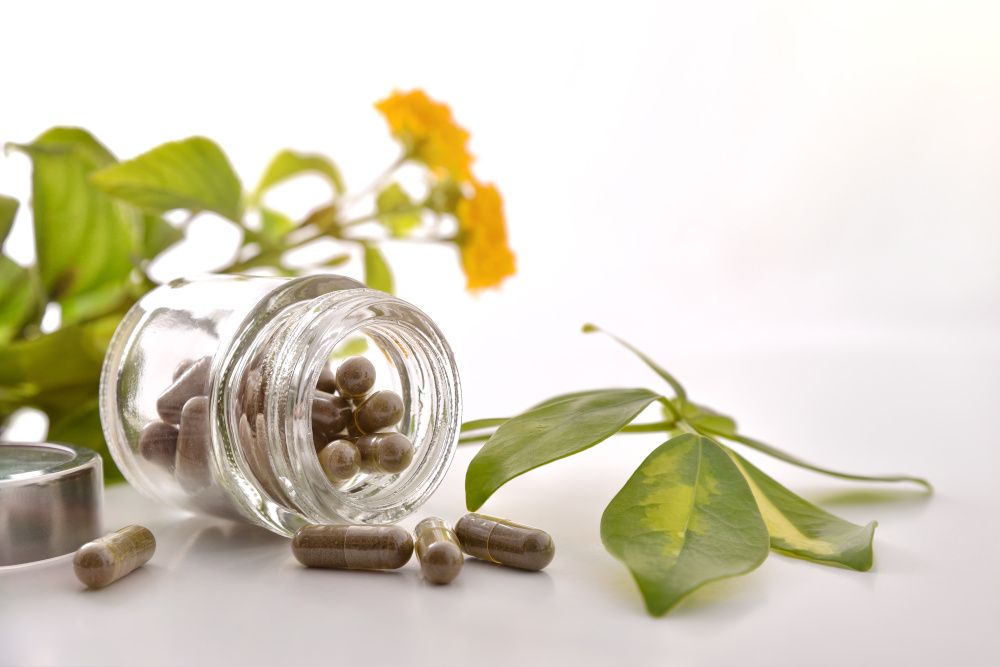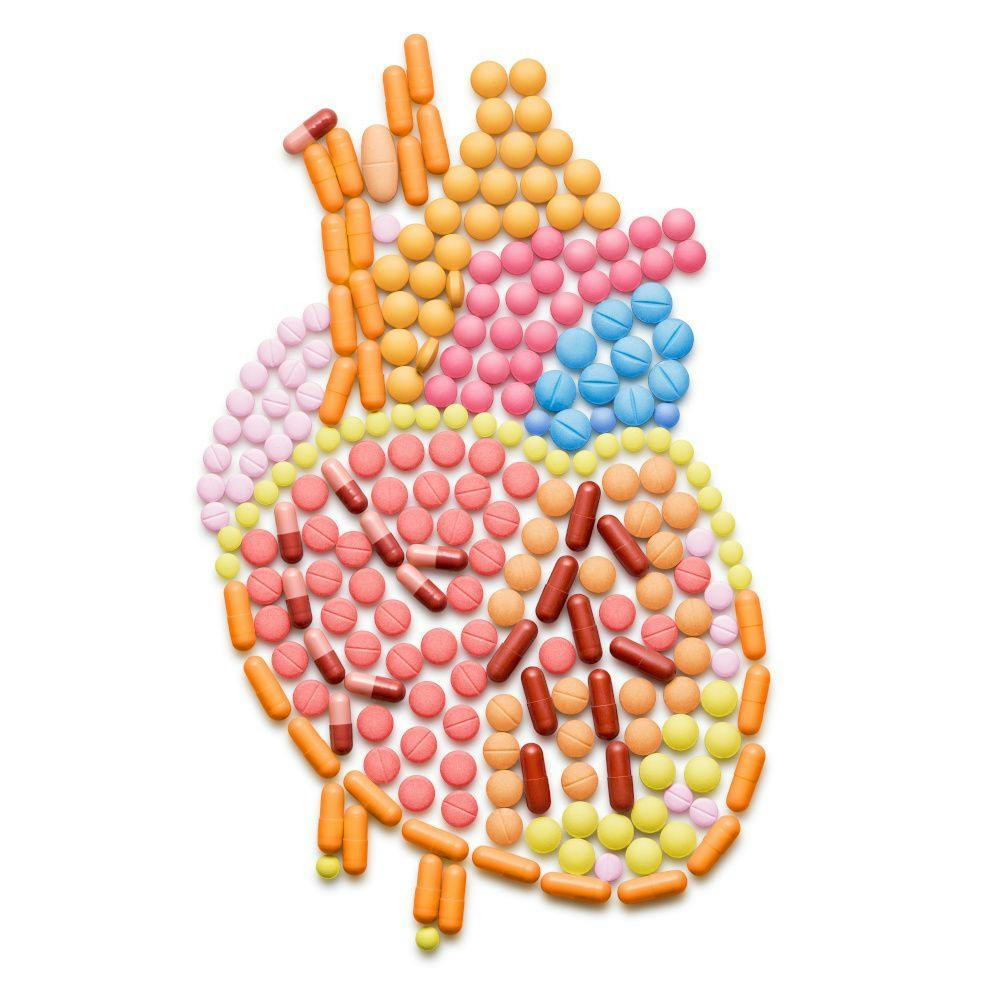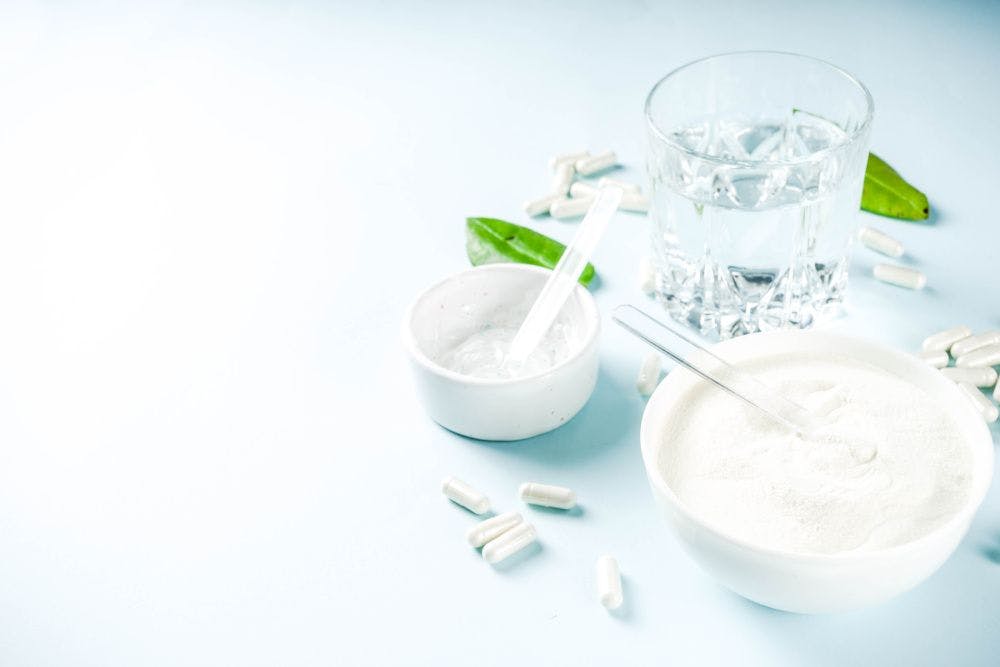Plant-based dietary supplement and vitamin dosage forms take on the giant: gelatin
What are key considerations when deciding between plant-based and gelatin delivery systems?
Photo © Davizro Photography - Stock.adobe.com

As in every other CPG category, plant-based products in the dietary supplements space are receiving a warm welcome. So warm is that welcome that Future Market Insights forecasts a CAGR of 10.9% for the global vegan—that’s vegan, not just vegetarian—supplement market from 2020 to 2028.1
Yet while growing plant-based demand raises the profit prospects for makers of botanical blends, phytonutrient-driven antioxidant formulas, and non-marine omega-3s, those profits will materialize only if manufacturers see plant-based in the big picture.
Namely, says Lindsey Toth, associate director, global marketing, Lonza Capsules & Health Ingredients (Basel, Switzerland), “What’s most important for brands developing new plant-based supplements is to think and plan holistically—inside and out. Yes, your ingredients are critical components of the formula, but what’s often forgotten is dosage form.”
As plant-based options continuously improve, though, dosage forms will remain forgotten no longer.
Good to Grow
Consumer interest in plant-based dietary supplements—and all the health and eco virtues they embody—won’t likely surprise industry insiders.
It certainly doesn’t surprise Toth, who’s witnessed rising demand not only for supplements with plant-based pedigrees but for products that address a whole constellation of trending positions—from vegan and organic to GMO-free and just-plain “clean.” In fact, she says, “Today, 79% of consumers value products made from natural, clean sources.2”
All of which leads Michael Baumann, global strategic marketing manager, IFF (New York City), to conclude that “whether they’re being more eco-conscious or going plant-based, consumers are becoming more selective in choosing products that fit their lifestyles and dietary restrictions. Manufacturers must adapt.”
Form Factors In
That means adapting supplement dosage forms, as well.
Proprietary Lonza research found that 70% of U.S. consumers say that dosage form factors into their supplement choices, Toth says.3
And many of those consumers are looking for plant-based options “across multiple supplement categories,” adds Dan Peizer, vice president, global strategy and marketing, consumer health, Catalent Inc. (Somerset, NJ).
Take botanicals, which are a key focus “because of their alignment with the plant-based message,” Peizer claims, while the entry into the market of plant-based omega-3s like ahiflower also promises to stoke demand for plant-based delivery.
Setting the Standard
Alas, supplement platforms like hard capsules, softgels, and gummies have traditionally been the domain of gelatin-based dosage forms—and still are.
“There is, without doubt, increasing demand for non-animal varieties,” admits Angie Rimel, marketing communications manager, Gelita USA (Sioux City, IA). “But the gelatin market remains both buoyant, and dominant.”
Per Innova Market Insights’ database, roughly 90% of the softgel and hard-cap universe relies on gelatin as a dosage form, she notes, with approximately 90% of the latest supplement launches in the gelatin category comprising products like hard-caps, softgels, and gummies.
And as far as Liz Clarke is concerned, there’s “good reason” for gelatin’s ubiquity: “Its physical properties, including thermoreversibility and pH-independent gelling, are simply unmatched by current plant-based ingredients,” says the technical marketing manager for North America at Nitta Gelatin NA (Morrisville, NC).
Gelatin’s performance and operational benefits begin with its economy and simplicity relative to plant-based options. Case in point: Rimel notes that gelatin-capsule production requires 40% less raw material than does capsule production using hydroxypropyl methylcellulose (HPMC), gelatin’s chief plant-based counterpart.
“Gelatin capsules also gain the upper hand when machineability and efficacy are the performance standards,” Rimel continues. Capsule shells must form “very thin and precisely cast films,” she explains, and both gelatin and even carrageenan accomplish this easily; the process with starch-based ingredients like HPMC, by contrast, “can be slow and more complex.”
Gelatin capsules permit less oxygen entry than does HPMC, which is a boon when delivering oxidation-sensitive formulations. To supply the same protection, Rimel says, HPMC capsules would either have to incorporate an antioxidant or use airtight blister-and-foil packaging.
And pharma-grade gelatins generally dissolve readily for quick payload release, Rimel says, disintegrating within three minutes once digested. Meantime, “The dissolution and disintegration times for standard HPMC hard-caps are longer, and issues have been reported with inconsistent and unreliable release.”
Clarke reminds brands to consider ingredient availability when moving beyond gelatin. “There’s no denying that supply chains everywhere are still experiencing COVID-induced stress,” she says, “and the complexity of manufacturing inputs for some plant-based gelatin alternative can raise additional hurdles.”
So whereas a hard gelatin capsule requires one ingredient for production—hint: it’s gelatin—an HPMC capsule “requires many other chemical inputs,” Clarke says, “including ethylene and propylene oxide—two ingredients that have seen critical availability disruptions and wild price swings over the past year.”
Finally, “Gelatin is a natural, single-ingredient product that’s been used in home kitchens for more than 80 years,” Clarke declares. “Many plant-based offerings, including HPMC, are highly processed, synthetic ingredients considered food additives.” And ultimately, she believes, even an animal-origin ingredient “that’s natural and not genetically modified may be more attractive than a highly processed plant-based ingredient that is.”
Gelatin’s Downsides
So gelatin’s got a lot going for it. But it also has drawbacks.
“Many consumers know what it’s like to leave gelatin-based gummies in the car on a sunny day,” Baumann points out. “The gummies lose their shape and form a big lump.” And while that drawback is obvious to consumers, others are all too apparent to manufacturers.
Among them are potential ingredient interactions, and subsequent stability issues, as well as the high moisture content (roughly 12% to 14%) of gelatin capsule shells. By contrast, Baumann says, the 4% to 6% moisture of HPMC-based capsules “better protects hygroscopic and moisture-sensitive ingredients while providing chemical stability against crosslinking.”
Thus, observes Udo Losehand, head of global technical developers, Roquette (Geneva, IL), “Despite gelatin’s numerous plus points, manufacturers are exploring alternative materials to overcome these challenges and meet consumer preferences for plant-based.”
Come a Long Way
Initially, those alternatives shrank in gelatin’s shadow, often failing to live up to the latter’s performance and quality characteristics.
Fortunately, “Plant-based delivery has undoubtedly come a long way over the last decade,” Peizer insists. Following HPMC’s development in the 1950s, he claims, “Additional plant-based technologies have been introduced that provide robust non-gelatin options to meet consumer needs and technical flexibility to allow for a greater range of formulation and fill options.”
Pleasing Both Sides
When choosing amongst the technologies, he advises focusing on those that provide “all the functional and aesthetic benefits consumers have come to expect from traditional materials while adding benefits that appeal to both consumers and brands.”
For example, Peizer’s noticed “a lot of interest” in Catalent’s Vegicaps softgels, which he says exhibit all the experiential benefits of gelatin-based products—including perceptions of improved swallowability—while offering formulators a wider formulation range and the potential for use in certified-vegan products, too.
Fit for Function
Adds Toth, “Make sure the form suits the ingredients you’re working with. Some may be light- or moisture-sensitive, while others need protection from stomach acid, for example. And consider the full process—from target consumer needs through filling and machinability.”
Research led Lonza to tried-and-true HPMC for its Capsugel Vcaps and Vcaps Plus capsules, which Toth calls “ideal” for protecting moisture-labile ingredients like herbs and minerals, and for offering an immediate-release profile. “We can add gelling technology to our base HPMC polymer to modify a capsule’s release profile further—useful when working with acid-sensitive ingredients.”
And for the company’s Plantcaps capsules, pullulan—an ingredient produced via tapioca fermentation—was the choice. It protects oxygen-sensitive ingredients, releases actives rapidly, and enables organic labeling in the U.S., Toth says, making Plantcaps “the ultimate dosage form for clean-label formulations.”
Solutions from the Sea
Baumann advocates alginate-based coatings for delayed-release tablets and capsules, wherein actives need protection from the stomach’s acid as they travel toward absorption in the intestines. Made from brown seaweed, alginates maintain the supplement’s integrity throughout digestion, Baumann says; but even when immediate release is required, “cellulose-based superdisintegrants can create fast action in tablets, capsules, granules, orally disintegrating tablets, and chewables.”
And while Baumann says that plant-based softgels have historically lacked gelatin’s “great sealing properties” and high fill capacities—achieving only 50% to 70% capacity even with simple fills compared to gelatin’s typical fill of 85% to 100% of a softgel’s volume—IFF developed its “optimized shell-forming” SeaGel system specifically to meet such standards and replicate gelatin’s flexibility in size, shape, and fill options.
Peas and Qs
Losehand notes that Roquette put the pea-starch dosage forms in its Lycagel line through their paces in capsule applications and found that—among other benefits—the ingredients yielded dry times of four to five days, which compare well to the three to four days that gelatin softgels typically require.
“In terms of capsule performance,” Losehand continues, “one of the best characteristics of high-performance pea starch is its strength relative to gelatin and ability to maintain structural integrity during production and storage.” Tests even showed that the products maintained a hardness of 19.1 N after six months at 25°C and 60% relative humidity, and 17.3 N after 12 months at 20°C.
Pea starch’s absence of crosslinking also means no significant increase in capsule disintegration during storage, Losehand adds. In tests, the product demonstrated a disintegration time of less than eight minutes after both 12 months at 20°C and six months at 40°C and 75% relative humidity, he says. “Further tests revealed that our pea-starch capsules showed no leakage or sticking, and do not exceed 8% moisture at 25°C and 60% relative humidity, and at 20°C,” he adds.
Going for Gummy
But while plant-based dosage forms have largely tamed capsules and softgels, gummies have proven tougher to subdue.
That’s because gelatin creates a “unique melt-in-the-mouth experience and texture” that consumers have grown accustomed to, Baumann says. That standard has historically laid outside plant-based ingredients’ reach, but technologies involving carrageenan, starch, agar, and pectin are improving.
Pectin in particular is “an exceptional gummy gel former,” Baumann says, lending a “soft, tender mouthfeel and much cleaner, shorter bite.” Its uniform gelling properties make for what he calls “a clean-cut, shiny appearance” with superior taste and flavor release, to boot. Baumann also praises pectin’s “effective setting time and stability during storage and shipment.”
“But not all pectin is created equal,” Bauman cautions. “Pectin tailored for gummy supplements—like Grindsted Pectin CF Premium grades—allow label claims, easy implementation, and efficient processing.”
Scott Bergeron, director of sales, coatings, Americas, Mantrose-Haeuser Company, Inc./NatureSeal Inc. (Westport, CT), notes that Mantrose-Haeuser has expanded its range of plant-based Certicoat anti-sticking polishes for gummy vitamins. Made with plant-based waxes and oils, the clean-label coatings not only make gummies look better in the package—enabling matte or high-gloss finishes, he says—but extend shelf life while providing good surface lubricity and flowability.
Several certified-organic options are also available, Bergeron adds. “Sustainability and environmental impact are important in consumers’ decisions,” he says. “By offering high-quality plant-based products with superior processing benefits and a wide range of finishes, we’re empowering manufacturers to offer customized delivery systems to their customers.”
Clarke notes that gummy formulators will even turn to blends of animal- and plant-based gelling agents both to optimize workability and to create “unique new textures,” as she calls them. “This is an exciting space to be in, because it allows product developers to go from short to bouncy to chewy and anything between.”
But perhaps best of all, it proves that “there’s room in the delivery-systems world for all kinds of ingredients,” Clarke says, “and much to consider beyond simply plant- or animal-based.”
References
- Future Market Insights report. “Vegan Supplements Market.” Published December 24, 2020.
- Natural Marketing Institute data. Supplements/OTC/Rx Trends, U.S. and Global Databases (SORD) – U.S., Germany, Italy, UK, France, Japan, Brazil. 2019, 2020.
- Proprietary Lonza U.S. survey data via Suzy, n=1000. 2020. Unpublished.

Prinova acquires Aplinova to further increase its footprint in Latin America
April 7th 2025Prinova has recently announced the acquisition of Brazilian ingredients distributor Aplinova, which is a provider of specialty ingredients for a range of market segments that include food, beverage, supplements, and personal care.





















